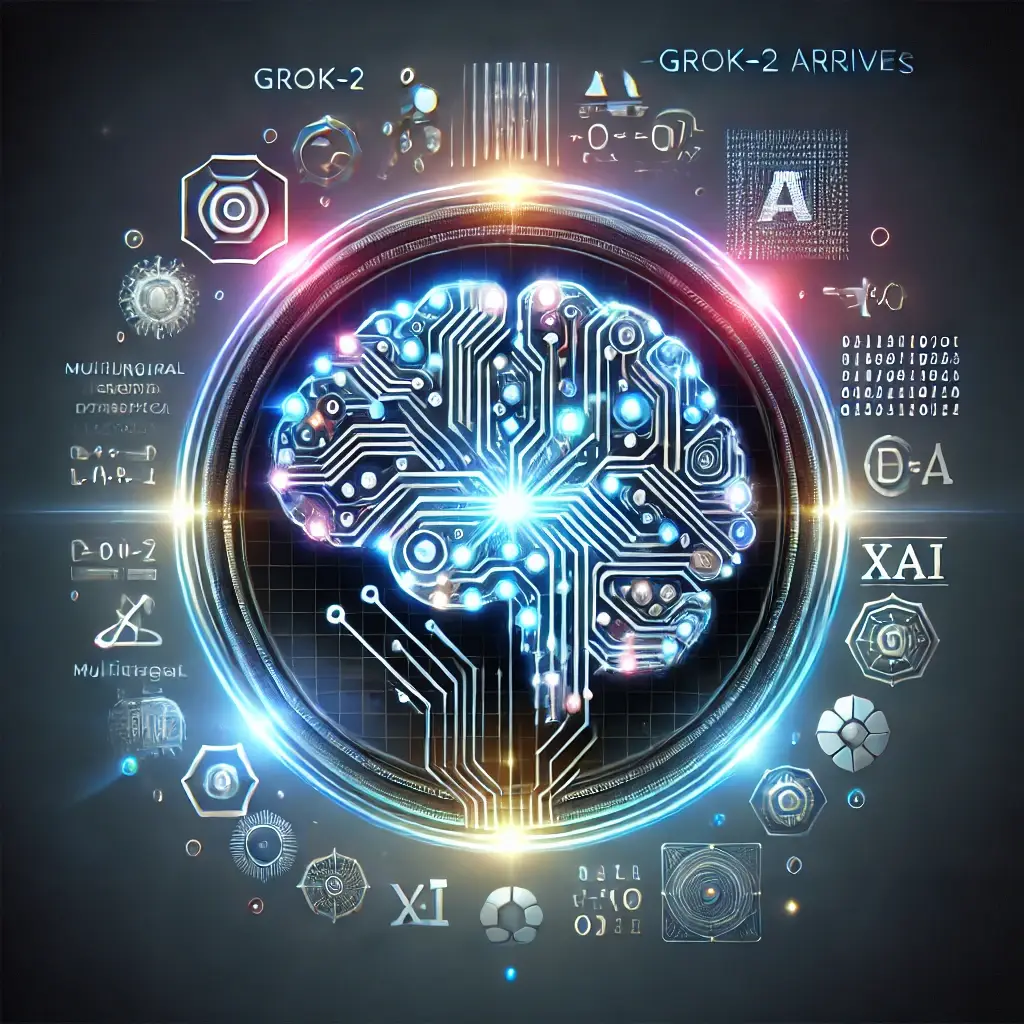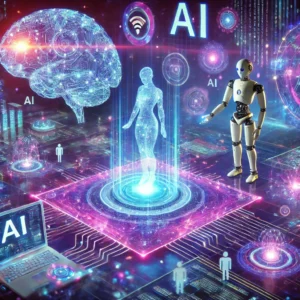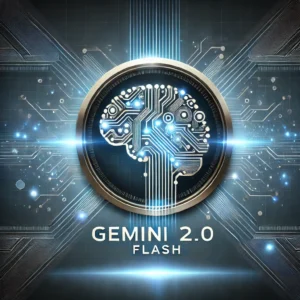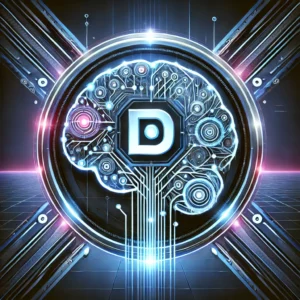Introduction to Grok-2
On December 13th, XAI unveiled Grok-2, a substantial upgrade that promises to revolutionize the landscape of artificial intelligence. This launch has stirred considerable excitement among technology enthusiasts and professionals alike, as the advancements presented by Grok-2 represent a pivotal moment in the evolution of machine learning models. The significance of Grok-2 is underscored by comparisons to its predecessors, which laid the groundwork for its current capabilities.
Grok-2 builds upon the achievements of previous iterations, leveraging enhanced algorithms and larger datasets to achieve improved performance. One of the critical differentiators for Grok-2 is its ability to handle complex tasks with increased efficiency and accuracy, setting a new benchmark for AI systems. The model has been designed to better understand context and nuance in language processing, allowing it to engage more effectively in human-like conversations. This feature not only enhances user experience but also expands the potential applications of the AI technology across various industries.
The anticipation surrounding Grok-2 reflects the broader trends in the artificial intelligence sphere, wherein organizations are seeking out more sophisticated tools to meet their unique challenges. The technological advancements of Grok-2 promise to address gaps identified in previous models, providing developers and businesses with an AI that can adapt and learn in real time. As adoption rates increase, Grok-2 is positioned to become an integral asset for innovation, research, and commercial applications.
In light of these developments, the technology community is keenly observing how Grok-2 will influence current AI practices. It is expected to lead to breakthrough innovations and inspire future iterations, further pushing the boundaries of artificial intelligence. As we delve deeper into the functionalities and implications of Grok-2, its role in shaping the AI landscape will undoubtedly be a focal point of discussion.
Performance and Accuracy
The introduction of Grok-2 signifies a substantial leap in artificial intelligence capabilities, particularly in performance metrics that are crucial for evaluating the effectiveness of AI models. Grok-2 has consistently outperformed its predecessors on the LMSYS leaderboard, establishing itself as a formidable competitor against well-known models such as GPT-4 Turbo and Claude 3.5 Sonnet. This remarkable achievement highlights the underlying advancements in its architecture and training methodologies, allowing Grok-2 to deliver superior results across a variety of benchmarks.
One of the standout features of Grok-2 is its enhanced accuracy in logical reasoning, mathematical problem-solving, and scientific inquiries. The model has demonstrated an exceptional proficiency in addressing complex graduate-level questions that were previously problematic for earlier models. This capability is particularly significant in academic and research settings, where precise and nuanced answers are paramount. Grok-2’s ability to handle high-level queries not only reinforces its status as an advanced AI model but also opens up new pathways for its application in fields requiring rigorous analytical skills.
The implications of Grok-2’s performance advancements extend beyond mere numerical superiority; they suggest an evolution in the practical utilities of artificial intelligence. As Grok-2 consistently delivers on tasks that require deep understanding and logical rigor, it paves the way for broader integration into professional domains, such as education, research, and data analysis. Moreover, with improved performance and accuracy, Grok-2 is likely to be a valuable tool in environments demanding high-stakes decision-making, where the cost of errors can be substantial. Overall, Grok-2 represents a new frontier in AI that combines heightened capabilities with real-world applicability, marking a significant milestone in the ongoing development of intelligent systems.
Speed and Efficiency
The introduction of Grok-2 marks a significant advancement in the realm of artificial intelligence, particularly in regard to speed and efficiency. One of the standout features of Grok-2 is its ability to process data more rapidly than its predecessors, effectively minimizing latency and enhancing user interaction. This improvement is not merely a matter of faster response times; it is predicated on sophisticated algorithms and optimized computational pathways that enable the model to handle large volumes of information with exceptional versatility.
Technological refinements, such as parallel processing capabilities and improved neural network architectures, play a crucial role in Grok-2’s performance. These optimizations allow the system to break down tasks into smaller, manageable units, which can be executed simultaneously. As a result, the response generation time is drastically reduced, thereby creating a seamless user experience that feels instantaneous. Users can expect a marked decrease in waiting times, leading to more fluid interactions with AI-driven applications.
Furthermore, Grok-2’s enhanced efficiency does not compromise its accuracy. In fact, the combination of speed and precision allows for a more engaging interaction between users and the AI. Users are able to receive timely responses without sacrificing the quality of information. This balance of efficiency and reliability is one of the defining features of Grok-2, setting it apart from earlier models that often had to choose between the two.
In summary, Grok-2’s notable improvements in speed and efficiency represent a pivotal shift in the capabilities of artificial intelligence. By leveraging advanced technologies, Grok-2 is not only faster but also offers an enhanced overall user experience, marking a new benchmark in the evolution of AI models.
Enhanced Multilingual Support
One of the standout features of Grok-2 is its enhanced multilingual support, positioning it as a transformative tool in the field of artificial intelligence. In today’s globalized environment, the ability to communicate effectively across different languages is not merely advantageous; it is essential. Grok-2 recognizes this need and delivers robust functionality to accommodate a diverse array of linguistic users, thus broadening its accessibility and usability.
The richness of Grok-2’s multilingual capabilities allows it to interact seamlessly with users from various cultural backgrounds. By offering support for multiple languages, Grok-2 ensures that more individuals can engage with AI technology, breaking down language barriers that often hinder effective communication. This feature not only enhances user experience but also expands the demographic reach of AI applications, making them more inclusive.
Moreover, the versatility of Grok-2 in handling different languages strengthens its applicability across numerous sectors, such as education, healthcare, and customer service. For instance, language-learning platforms can leverage this functionality to provide personalized lessons to users in their native tongue, enhancing comprehension and retention. In healthcare, multilingual support can facilitate better communication between providers and patients, ensuring that critical information is conveyed accurately, regardless of language proficiency.
The implications of Grok-2’s multilingual capabilities extend beyond mere translation. By understanding the context and nuances of various languages, Grok-2 is poised to transform how people interact with AI. This feature promises to redefine accessibility, allowing more individuals to engage with technology regardless of their primary language. As Grok-2 continues to evolve, its commitment to supporting a wide range of languages will undoubtedly play a crucial role in the future of artificial intelligence, paving the way for more effective global communication.
Innovative Image Generation Features
The advancement of artificial intelligence has opened new avenues for creativity and innovation, particularly with the introduction of Grok-2. One of its standout features is its image generation capability, built upon Black Forest Labs’ Flux-1 model. This innovative functionality enables users not only to generate textual outputs but also to create visual content seamlessly. The integration of text and image generation holds significant implications for various applications, including marketing, content creation, and education.
With Grok-2, the user interface allows for straightforward input of text prompts, which the system then interprets to produce corresponding images. This capability brings a unique dimension to AI, where the synthesis of narrative and visual elements can lead to more engaging and informative presentations. Whether creating illustrations for a blog post, developing promotional materials, or designing educational resources, Grok-2’s image generation feature provides users with a powerful tool for enhancing their content.
The use of the Flux-1 model enhances the quality and variety of the generated visuals. Users can expect outputs that not only match the text prompts in relevance but also showcase diverse artistic styles. This flexibility paves the way for refined customization, allowing users to dictate the unique characteristics of the images produced. Furthermore, the combination of textual and visual outputs fosters an immersive experience, encouraging deeper understanding and retention of information.
In today’s fast-paced digital landscape, the ability to generate compelling visuals quickly and efficiently is invaluable. As Grok-2 continues to evolve, its image generation capabilities will likely gain further enhancements, solidifying its place in the future of AI applications. The merging of textual and visual elements through Grok-2 exemplifies the significant strides being made in the field, pushing the boundaries of what artificial intelligence can achieve.
Free Access to Grok-2
In a transformative move for the artificial intelligence landscape, Grok-2 has been made accessible to all users of the X platform at no cost. This decision is poised to revolutionize the way individuals and organizations interact with AI technology, breaking down barriers that have historically limited access to advanced tools and capabilities. By allowing free access, Grok-2 creators are not only democratizing artificial intelligence but also fostering an environment ripe for innovation and creativity.
The implications of this unprecedented accessibility are significant. Users ranging from independent developers to large enterprises can harness the capabilities of Grok-2 without the concern of subscription fees or financial commitments that might otherwise inhibit experimentation. This levelling of the playing field empowers a diverse array of users, opening up avenues for creative applications across various sectors, including education, healthcare, finance, and beyond.
Moreover, the potential for innovation is enhanced when more individuals have access to cutting-edge AI technology. With Grok-2 at their fingertips, users can explore new solutions, solve complex problems, and develop applications that previously might have seemed out of reach. Collaboration within the community is likely to flourish as more people engage with this powerful tool, sharing insights and developments that could drive further advancements in the field. This spirit of collaboration can lead to a richer exchange of ideas, propelling artificial intelligence toward new frontiers of possibility.
In providing free access to Grok-2, the initiative not only supports the individual user’s journey into the realm of artificial intelligence but also contributes to the overall growth of the technology sector. As users embrace Grok-2, the potential for societal advancements becomes vast, signaling a bright future for AI where innovation knows no bounds.
Introduction of API Access
The introduction of the Grok-2 API marks a significant advancement in the accessibility of artificial intelligence tools for developers and businesses alike. With the growing demand for AI-driven solutions across various sectors, the availability of an API allows for seamless integration into existing applications, enabling both individual developers and organizations to harness the capabilities of Grok-2 effectively. Notably, Grok-2 offers an attractive incentive of $25 in free credits, which serves as a compelling starting point for those looking to experiment and innovate.
The API’s design prioritizes user-friendliness, making it accessible even to those with limited experience in AI integration. With comprehensive documentation and support resources, developers can quickly learn to utilize the diverse features and functionalities that Grok-2 offers. This ease of integration opens doors for smaller enterprises and startups, allowing them to compete with larger companies by implementing AI solutions that enhance their operational efficiency and customer engagement. Furthermore, with Grok-2’s flexible architecture, the API caters to various programming languages and environments, broadening its appeal to a diverse audience of developers.
The potential applications of the Grok-2 API are vast, spanning industries from e-commerce to healthcare. By integrating Grok-2 into their platforms, businesses can develop predictive analytics tools, automated customer service solutions, and personalized marketing strategies. These innovations not only enhance the user experience but also enable more informed decision-making across various organizational levels. Overall, the introduction of API access to Grok-2 stands as a pivotal development, propelling the advancement of AI technology while offering tangible benefits to developers and businesses striving to innovate.
Community Engagement and Feedback
The launch of Grok-2 has generated considerable interest within the technology community, marking a significant moment in the evolution of artificial intelligence. Early adopters have shared their experiences and insights, contributing to a dialogue that emphasizes the importance of user feedback in the development of advanced AI systems. As a next-generation model, Grok-2 offers various enhancements over its predecessor, sparking discussions among users and experts alike regarding its capabilities and limitations.
Initially, many users have praised Grok-2 for its improved natural language processing abilities, which facilitate more nuanced conversations. These advancements have been instrumental in applications ranging from customer service to creative writing, showcasing the model’s versatility. Additionally, feedback around usability and user interface design has indicated areas where enhancements could further improve the user experience. This ongoing communication allows developers to refine Grok-2’s features in real-time, ensuring that the AI remains aligned with user needs.
The responses from the expert community have been equally encouraging. Industry leaders and researchers have recognized the potential of Grok-2 to advance the field of explainable artificial intelligence (XAI). The collaboration between developers and AI professionals is pivotal in discussing future updates and features that prioritize transparency and user control. With such an engaged community, Grok-2 is not just a standalone launch but rather a catalyst for thought-provoking discussions on ethics, usability, and the overall impact of AI on society.
As communication continues between users and the development team, the collective experience and suggestions are expected to shape the trajectory of Grok-2’s evolution. This partnership is essential to the model’s success, ensuring that Grok-2 not only meets but exceeds user expectations in its journey toward becoming a leading tool in artificial intelligence.
The Future of AI with Grok-2
The introduction of Grok-2 marks a significant turning point in the field of artificial intelligence. As technology continues to evolve, Grok-2 is poised to influence various sectors by pushing the boundaries of what AI can achieve. This innovative platform not only enhances current capabilities but also lays a foundation for future advancements, enabling researchers and developers to explore untapped potential. The exceptional features of Grok-2 might lead to more efficient algorithms, advanced natural language processing, and improved machine learning techniques, further accelerating AI’s integration into everyday applications.
As industries begin to adopt Grok-2, we can expect a transformative impact on areas such as healthcare, finance, and education. For instance, in the healthcare sector, Grok-2’s capabilities could facilitate personalized medicine, enhancing treatment plans based on individual patient data. Financial institutions may leverage the power of Grok-2 to improve fraud detection systems and automate complex trading strategies, thereby increasing efficiency and reducing risk. In education, it could revolutionize personalized learning experiences, tailoring educational content to meet individual student needs.
Moreover, Grok-2’s role in addressing global challenges cannot be overlooked. The ongoing issues of climate change, resource management, and data privacy are becoming increasingly pressing. AI technology, particularly Grok-2, could provide innovative solutions that drive sustainability efforts, optimize resource use, and strengthen cybersecurity measures. By harnessing the vast amounts of data generated globally, Grok-2 can assist in making informed decisions that help stakeholders navigate complex challenges effectively.
As we look ahead, the advancements brought forth by Grok-2 will undeniably shape the future of artificial intelligence. Continuous growth in AI technology is expected to spur further developments, eventually leading to a future where AI plays an even more integral role in enhancing human productivity and solving critical global issues.
Conclusion: A New Chapter for XAI
The arrival of Grok-2 marks a significant milestone in the evolution of artificial intelligence, particularly within the framework of Explainable Artificial Intelligence (XAI). As an innovative solution, Grok-2 not only expands the capabilities of AI but also enhances transparency, making these powerful tools more accessible to a diverse user base. This democratization of technology ensures that individuals and organizations, regardless of their technical expertise, can harness advanced AI systems to address various challenges.
The launch of Grok-2 aligns with XAI’s overarching commitment to developing technologies that serve humanity’s best interests. By prioritizing user-friendly interfaces and comprehensive explanations of AI decision-making processes, Grok-2 embodies the principles of transparency and accountability. These features empower users to understand the rationale behind AI-driven outcomes, thereby fostering trust and facilitating responsible AI adoption. This is especially critical in sectors such as healthcare, finance, and public policy, where the implications of AI-driven decisions can have significant social impacts.
Moreover, Grok-2 is set to play a pivotal role in future innovations across various industries. Its capacity to analyze vast datasets and generate insights quickly opens new avenues for research and problem-solving. By introducing powerful AI capabilities to broader audiences, Grok-2 encourages collaboration between technologists and domain experts, paving the way for groundbreaking applications that can enhance productivity and innovation.
In conclusion, Grok-2 signifies a new chapter in the realm of artificial intelligence and XAI. Its introduction not only highlights the advancements made in AI technology but also underscores the commitment to creating systems that benefit society as a whole. With Grok-2, the future of artificial intelligence is poised to be more inclusive, ethical, and impactful.
If you’re passionate about artificial intelligence, visit sipos-ai.com for the latest insights and updates!




